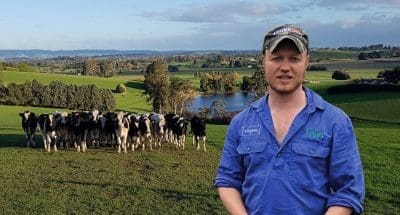CATTLE deaths due to botulism are on the rise, with increased risks of feed contamination from recent mice plagues across eastern Australia.
A recent botulism outbreak in Western Victoria was the result of unvaccinated dairy cattle being fed silage contaminated with dead mice, resulting in significant losses. Management of these outbreaks is a major logistical exercise and traumatic for both livestock and producers.

Dr Matt Ball
Botulism is a severe and often fatal disease of cattle caused by exposure to a toxin produced by the bacterium Clostridium botulinum. Under favourable conditions, active spores can lead to bacterium growth, and the resulting toxin can kill cattle when accidentally ingested.
Virbac Australia technical services manager and owner of Beacon Veterinary at Alstonville, northern NSW, Dr Matthew Ball, issued a warning this morning about botulism risk.
“Botulism is one of the most lethal toxins on earth, potentially killing thousands of Australian cattle each year. Its spores multiply suddenly, and if toxin from active bacteria gets into the body, it affects the junctions between the muscles and nerves, leading to paralysis, and often death,” he said.
Botulism comes from a bacterial toxin that proliferates in the carcases of dead mice. This year’s plague has seen mice moving into hay sheds and feed storage facilities containing grain and silage, creating ideal conditions for contamination and development of the botulism toxin.
When livestock eat the hay and pieces of the carcases, they become poisoned. This causes flaccid paralysis which results in the animals going down, unable to eat or drink and eventually dying. Large numbers of stock may be affected and there is no treatment.
In some historical cases, more than half the cattle in a herd have died.
Dr Ball said it was prudent for southern livestock producers to vaccinate for botulism, regardless of whether or not it was planned to feed hay, due to the extreme contamination of paddocks with mice carcases this year.
“There are some highly effective botulism vaccines that can provide protection after just one injection,” he said. “This makes it easy for cattle farmers to add botulism vaccination to their herd.”
“Vaccination is the only option to mitigate the risk for cattle producers, as botulism infection can drastically affect both profit and productivity,” Dr Ball said.
“And if more animals in high-risk areas can be saved, that’s a huge welfare improvement, as well. Put simply, vaccination means fewer deaths and a more successful farm business – facts all worth considering when producers are looking at the best way to protect both a farm’s animals and its livelihood.”
- Virbac’s botulism vaccine, Singvac, is available as an annual vaccine or a vaccine with a three-year claim. For southern beef and dairy producers, it is recommended to use an annual botulism vaccination program. For details, click here or talk to your local cattle vet or rural livestock expert.
Source: Virbac
